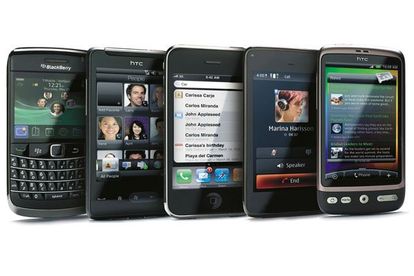
CTIA-The Wireless Association® and the wireless industry joined the Federal Communications Commission (FCC) and Federal Emergency Management Agency (FEMA) to offer Americans a robust and reliable wireless emergency alert system.
Wireless Emergency Alerts (WEA), also known as Commercial Mobile Alert System (CMAS) or Personal Localized Alerting Network (PLAN), is a national emergency alert system to send concise, text-like messages to users’ WEA-capable mobile devices starting April 2012. Wireless providers representing nearly 97 percent of subscribers are participating in distributing wireless emergency alerts.
Mobile users will not be charged for receiving these text-like alerts and are automatically enrolled to receive them.
There are three different kinds of alerts:
Presidential Alerts – Alerts issued by the President or a designee;
Imminent Threat Alerts – Alerts that include severe man-made or natural disasters, such as hurricanes, earthquakes, tornadoes, etc., where an imminent threat to life or property exists; and
AMBER Alerts – Alerts that meet the U.S. Department of Justice’s criteria to help law enforcement search for and locate an abducted child.
Douglas Hansen, Chief of the Bureau of Fire Prevention at From Ridgefield Park, New Jersey, had this to say "We should be using today's technology to keep the public aware of any dangerous conditions. This is a good first step, however, at this time, I'm not sure if there is an opt out provision. We have found, with our reverse 911 system, some people do not want to receive emergency messages, for whatever reason."
From the FEMA site: WEA are not the same as text messages. WEA will not have to be opened like SMS text messages, but will “pop up” on the device’s screen. A key differentiator between the CMAS/WEA capability and the existing Short Message Service Point-to-Point (SMS-PP)--a one-to-one or one-to-few alerting service--is that WEA uses SMS-Cell Broadcast (SMS-CB), a one-to-many service, which simultaneously delivers messages to multiple recipients in a specified area. By using SMS-CB as the delivery technology service, WEAs avoid the congestion issues currently experienced by traditional SMS-PP alerting services, which translates into faster and more comprehensive delivery of messages during times of emergency
From The Huffinton Post:
The weather warnings will include tornadoes, hurricanes, typhoons, tsunamis, flash floods, extreme winds, blizzards and ice and dust storms. Designers were concerned about overloading users with too much information, so they deliberately limited the messages to warnings, not watches, and excluded severe thunderstorm warnings, weather service spokeswoman Susan Buchanan said.
Wireless carriers serving almost 97 percent of U.S. subscribers have agreed to participate, including the biggest nationwide companies – AT&T Inc., Verizon Wireless, Sprint Nextel Corp. and T-Mobile USA. Each of the four offers at least some phones capable of receiving emergency alerts, with more on the way.
Sprint, Verizon and T-Mobile say they offer the service nationwide. AT&T only offers it in New York City, Washington, D.C., and Portland, Ore., at the moment. Spokesman Michael Balmoris said the company will add additional markets over time but declined to say which ones or when.
What do you think about this?
 RSS Feed
RSS Feed
